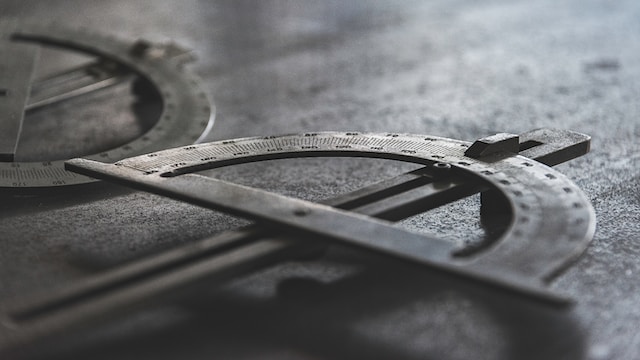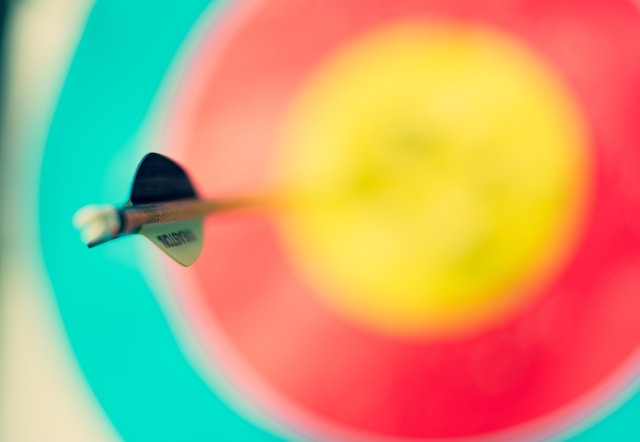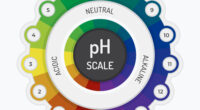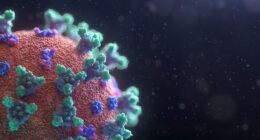Accuracy focuses on correctness by minimizing errors between measured values and true values or targets; precision emphasizes consistency by reducing variations within repeated measurements.
What is the difference between accuracy and precision?
Accuracy and precision are two distinct concepts commonly used in the context of measurements and data analysis.
Accuracy:
- Accuracy refers to how close a measured value is to the true or target value.
- It quantifies the degree of correctness or trueness of a measurement.
- A measurement is considered accurate if it is close to the desired or expected value, regardless of the consistency or repeatability of the measurements.
Precision:
- Precision, on the other hand, measures the level of consistency, repeatability, or reproducibility of a set of measurements.
- It indicates how closely the measurements cluster around each other.
- Precision is independent of the true value or target; it focuses on the consistency of results.
- Highly precise measurements have minimal variation or scatter between individual measurements.
Accuracy relates to how close a measurement is to the true value, while precision relates to the consistency and reproducibility of measurements. Accuracy implies correctness, while precision emphasizes consistency. It’s important to note that a measurement can be accurate but not precise, precise but not accurate, both accurate and precise, or neither accurate nor precise, depending on the specific circumstances.
Accuracy Vs. Precision – Examples
Target Shooting
- Accuracy: Imagine a marksman hitting the bullseye of a target with every shot. The shooter consistently hits the center, indicating high accuracy. The shots are close to the desired or true target, regardless of whether they are clustered tightly or spread out.
- Precision: In this example, a marksman consistently hits the same spot on the target, but not necessarily the center. The shots form a tight cluster, indicating high precision. Even if the cluster is away from the bullseye, the measurements are precise due to their consistency.
Laboratory Measurements
- Accuracy: In a laboratory experiment, a scientist aims to measure the pH of a solution using a pH meter. The true pH value of the solution is known to be 7.0. If the scientist obtains a pH reading of 6.9, it indicates high accuracy because it is very close to the true value.
- Precision: In the same experiment, the scientist repeats the pH measurement several times using the same pH meter. If the measurements consistently yield results like 6.9, 6.8, 7.0, 6.9, and 7.1, even though they are slightly different from the true value of 7.0, they demonstrate high precision because they are closely clustered around each other.
GPS Navigation
- Accuracy: When using a GPS device for navigation, accuracy refers to how closely the device’s calculated location matches the actual physical location. If the GPS indicates your position as being within a few meters of your actual location, it is considered accurate.
- Precision: Precision in GPS navigation refers to the consistency of the calculated positions. If the GPS consistently shows your location as within a few meters of the correct position across multiple readings, it demonstrates high precision, even if the actual position may be slightly off.
Accuracy is about the closeness to the true value or target, while precision focuses on the consistency or tightness of measurements or results.
What is accuracy?

Accuracy refers to the degree of closeness between a measured value and the true or accepted value. In other words, it is a measure of how correct or accurate a measurement is. Accuracy is all about getting as close as possible to the target.
In scientific terms, accuracy can be quantified by calculating the error between the measured value and the true value. A low error means high accuracy, indicating that the measurement is very close to being correct.
In practical terms, accuracy is important because it ensures that our measurements are reliable and trustworthy. For example, in medical diagnostics, accurate test results are crucial for making informed decisions about patient care.
What is precision?

Precision refers to the level of consistency or reproducibility in a set of measurements. It focuses on how closely multiple measurements are clustered around each other, indicating the degree of random error present in the data.
In simpler terms, precision is all about getting consistent results when repeating an experiment or taking multiple measurements. If your measurements have low variability and are tightly packed together, then you have high precision.
Precision is often represented by statistical measures such as standard deviation or variance. These calculations provide insights into how much variation there is within a dataset and can help determine if your results are reliable and repeatable.
Accuracy Vs. Precision – Key differences
| Accuracy | Precision |
|---|---|
| Proximity to the true or target value | Consistency and reproducibility of measurements |
| Correctness or trueness of a measurement | Consistency and tightness of measurements |
| How close a measurement is to the true value | How closely measurements cluster around each other |
| Hitting the bullseye of a target | Consistently hitting the same spot on the target |
| Indicates correctness or trueness | Indicates consistency and reproducibility |
| Can be accurate but not precise | Can be precise but not accurate |
| Essential for reliable measurements | Important for consistency and control of results |
How to improve precision?
Improving precision involves reducing the variability or random error in measurements. Here are a few strategies that can help you enhance precision:
- Use appropriate measuring instruments: Ensure you use precise tools and equipment that are suitable for the task at hand. Using outdated or inaccurate instruments can introduce errors into your measurements.
- Take multiple readings: Instead of relying on a single measurement, take several readings and calculate the average. This helps to minimize random errors and provides a more accurate representation of the true value.
- Increase sample size: A larger sample size generally leads to increased precision as it reduces the impact of outliers or extreme values within the data set.
- Improve experimental technique: Pay attention to details such as proper calibration, consistent measurement techniques, and controlling environmental factors like temperature or humidity. These factors can greatly influence precision.
- Practice good statistical analysis: Utilize appropriate statistical methods when analyzing data to identify any patterns, trends, or sources of variation that may affect precision.By implementing these strategies, you can enhance your precision levels and obtain more reliable and consistent results in your measurements!
How to improve accuracy ?
Improving accuracy is crucial in many aspects of life, whether it’s in scientific experiments, sports performance, or even everyday tasks. Here are some strategies you can implement to enhance your accuracy:
- Practice Makes Perfect: Regular practice allows you to develop muscle memory and sharpen your skills. Whether it’s shooting hoops on the basketball court or typing on a keyboard, consistent practice helps improve accuracy over time.
- Focus on Attention to Detail: Paying close attention to details can significantly impact your accuracy. Take the time to carefully read instructions, double-check calculations, or review your work before finalizing it.
- Eliminate Distractions: Minimizing distractions around you can help improve focus and concentration while performing tasks that require precision. Find a quiet space where interruptions are minimal and create an environment conducive to accurate work.
- Use Tools and Technology: Utilize tools and technology designed for enhancing accuracy in specific areas such as measuring instruments with higher precision or software that assists in data analysis.
- Seek Feedback and Learn from Mistakes: Soliciting feedback from others can provide valuable insights into areas where improvements may be needed. Be open-minded about constructive criticism and learn from any mistakes made along the way.
- Set Realistic Goals: Setting realistic goals allows for incremental progress towards greater accuracy without overwhelming yourself with unrealistic expectations.
Which is important: Accuracy or Precision?
The importance of accuracy versus precision depends on the specific context and application. Both accuracy and precision have their own significance and are relevant in different scenarios:
Importance of Accuracy: Accuracy is crucial when the goal is to obtain measurements or results that are as close to the true or target value as possible. In fields like scientific research, medical diagnostics, engineering, or quality control, accuracy is highly valued to ensure correctness and reliability. Accuracy is particularly important when the consequences of incorrect measurements or decisions are significant.
Importance of Precision: Precision is essential when consistency, reproducibility, or control of measurements or results is the primary focus. It is valuable in fields such as manufacturing, statistical analysis, data interpretation, and research. High precision allows for reliable comparisons, identification of small changes or trends, and the detection of subtle variations or patterns.
In some cases, striking a balance between accuracy and precision is necessary. It depends on the specific requirements and objectives of the measurement or analysis being conducted. The relative importance of accuracy and precision can vary based on the field, industry, application, and desired outcomes.
How is accuracy and precision mesured?
To measure accuracy and precision, different methods and statistical techniques can be employed depending on the nature of the measurements and data.
Measuring Accuracy:
- True Value Comparison: If a known true or target value exists, you can compare the measured values to the true value. The difference between the measured and true values provides an indication of accuracy.
- Standard Reference Materials: Use certified reference materials with known values to compare measurements. This approach is often employed in laboratory settings to assess the accuracy of analytical techniques or instruments.
- Inter-laboratory Comparisons: Conduct comparisons between different laboratories or measurement systems to evaluate accuracy. This method helps identify any systematic biases or discrepancies across multiple sources.
Measuring Precision:
- Repeatability and Reproducibility: Perform multiple measurements under the same conditions by the same operator (repeatability) or different operators or instruments (reproducibility). Calculate statistical measures such as standard deviation or coefficient of variation to assess precision.
- Control Charts: Use control charts to monitor the stability and variability of measurements over time. Control charts track the range or standard deviation of repeated measurements and help identify any out-of-control or inconsistent data points.
- Inter-laboratory Proficiency Testing: Participate in proficiency testing programs where multiple laboratories perform the same measurements. The results are compared and evaluated to assess the precision and consistency of measurements across different laboratories.
Different measurement techniques and statistical analyses may vary depending on the field, industry, and type of data being measured. The choice of method should align with the measurement goals and requirements of the particular application.
Image Credits
Featured Image By – Ricardo Arce on Unsplash
Image 1 By – Afif Ramdhasuma on Unsplash









